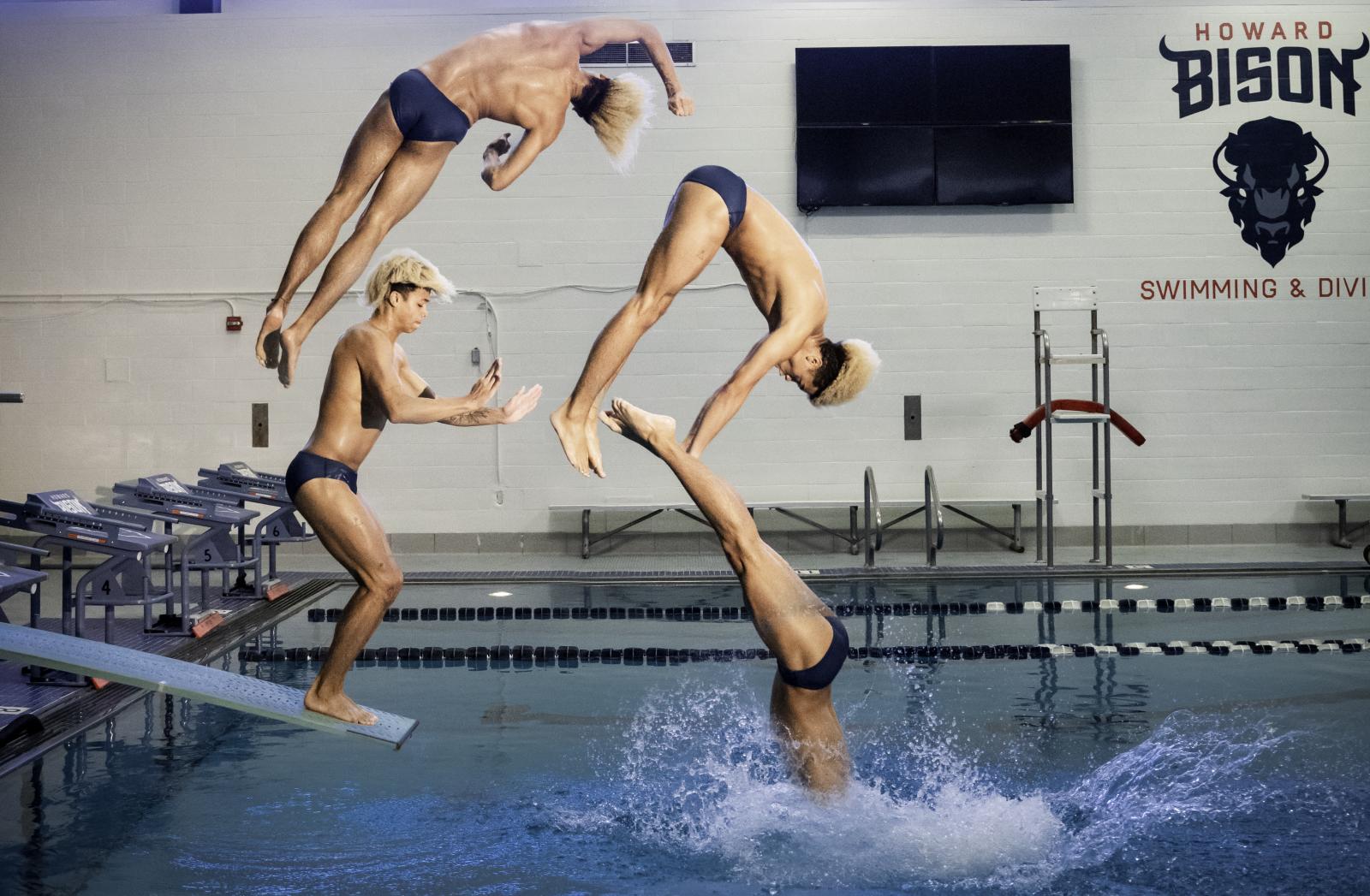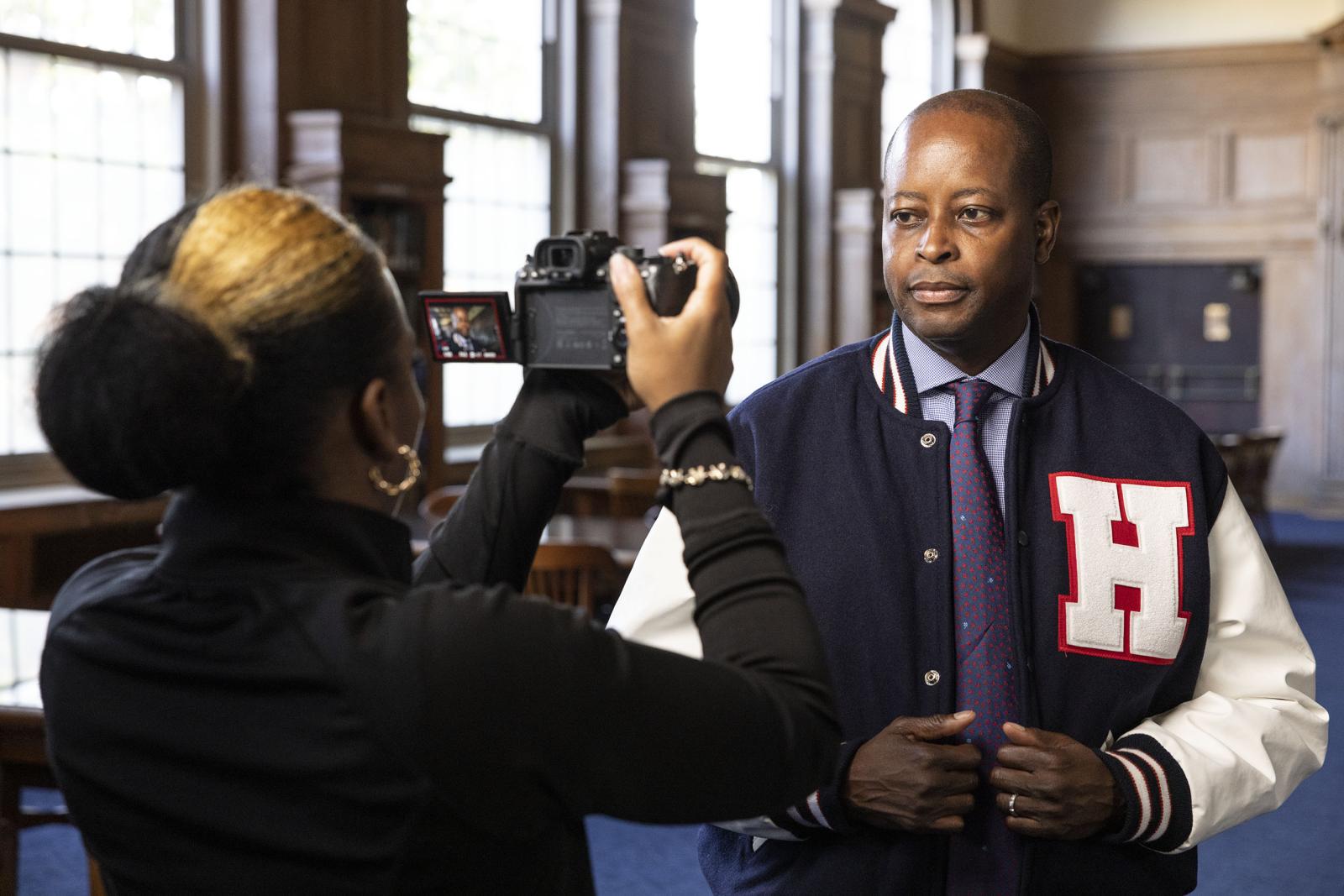On June 10, 2013, The Washington Post published a letter written by a member of the Howard University Board of Trustees and leaked to the press. In the communication, which had been sent to the other board members on April 24 of that year, the trustee warned that, if the University did not take decisive action, “Howard will not be here in three years.”
Any institution of higher education, especially ones as old as Howard, will inevitably endure periods of growth and decline. Additionally, colleges and universities do not operate in a vacuum; they are subject to the particular social, economic, and environmental challenges of their time and space. Howard in 2013, along with other American universities, was still grappling with the aftermath of the Great Recession, persistently high unemployment, falling enrollment in higher education nationwide, and more challenges.
Certainly, many in the Howard community disagreed with the letter, either in terms of the specific critiques or perhaps just in the direness of the message. Nevertheless, during the Fall 2013 semester, Howard’s problems were undeniably serious – and, therefore, so were the challenges facing the new interim president, Wayne A. I. Frederick, M.D., MBA.
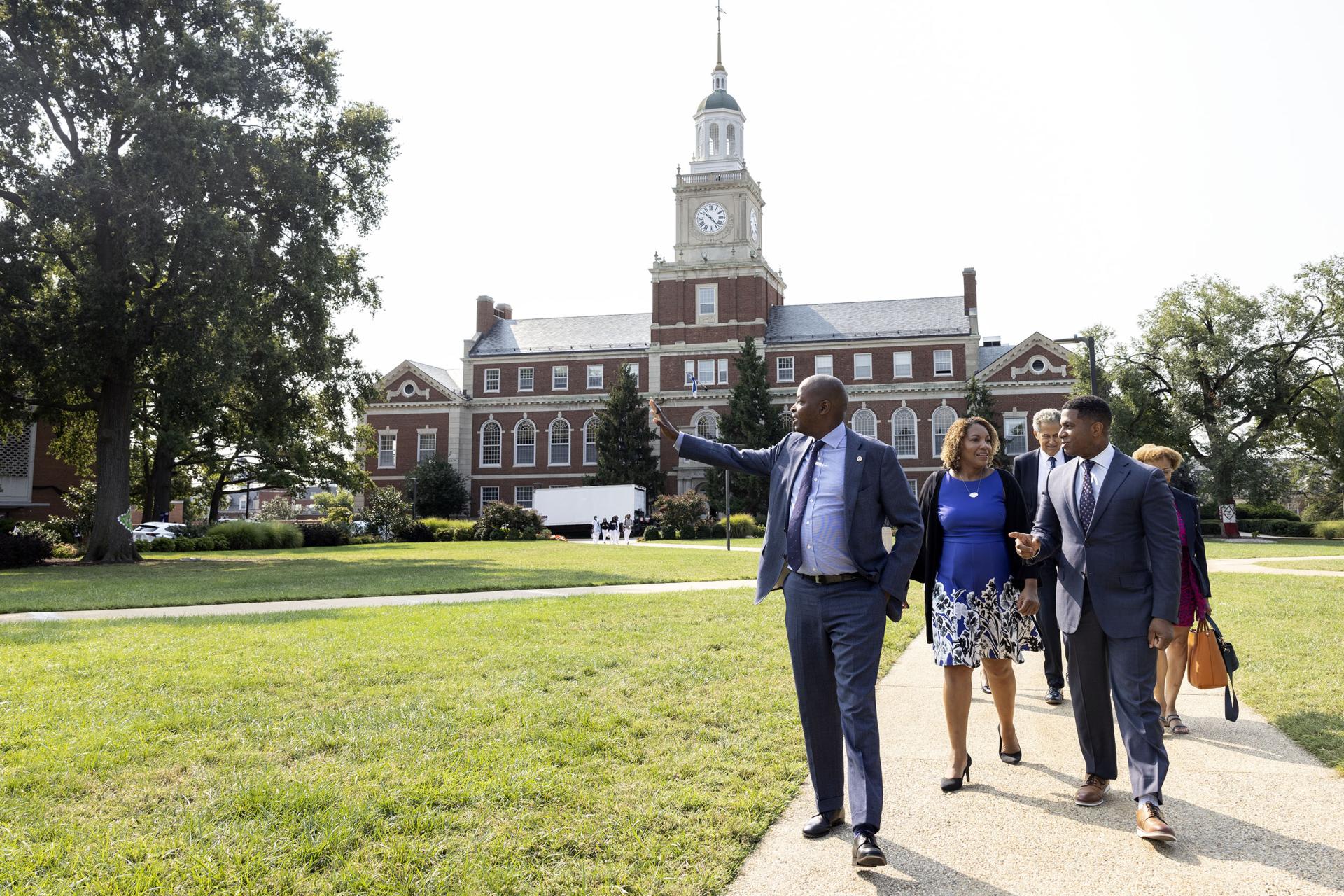
ICONS: Dr. Frederick leads a group of new trustees on a tour of campus. Photo by Pete Souza
The Challenge: Save Howard and Return It to Glory
In October 2013, Dr. Frederick, who was Howard’s provost at the time, received a call from the Board of Trustees and was informed that the president was stepping down and that he was going to be named interim president.
“I had no interest in the presidency. When I became interim, I did it out of loyalty and service to Howard,” Dr. Frederick says. “I describe myself as a reluctant president.”
Dr. Frederick served as interim president for nine months before being installed as the 17th president of Howard in July 2014. He considers himself fortunate to have had the opportunity to serve on an interim basis before being installed as the permanent president because it gave him an opportunity to develop a clear sense of the University’s circumstances and challenges without the same pressures that came with the office.
According to Dr. Frederick, Howard’s mission was being threatened by low enrollment, declining tuition revenue, and poor finances. Howard University Hospital was losing money, and the University was bringing in very little through charitable contributions. Many of the physical facilities were in need of renovation; Dr. Frederick estimates that there was a deferred maintenance bill of around $750 million.
Regardless of the state of the University, Dr. Frederick attempted to sound positive when communicating to the Howard community. “We had lost a little bit of our luster, but we were going to get it back. The difficulty was in laying out an optimistic future while recognizing that there was a lot to be done,” he says. “In retrospect, I probably undersold the gravity of our circumstances. But when I look at where we were then and where we have gotten the University to now, I think it was the right thing to do.”
Paul Monteiro, who served as Dr. Frederick’s chief of staff from 2017-2022, also notes the University’s problems with its investments and its credit ratings as well as personnel problems stemming from a series of layoffs that were necessitated by the financial shortfalls.
“He inherited a situation that was very challenged on the financial front,” Monteiro says. “Some of his greatest accomplishments in my mind, are the ways that he helped stabilize the University, such that he could stop the [bleeding] and build a foundation [to grow and prosper].”
According to Calvin Hadley, senior adviser to the president for strategic initiatives, when Dr. Frederick became president, “the question wasn’t, ‘How big can you dream?’ The question was, ‘How can you keep the lights on?’”
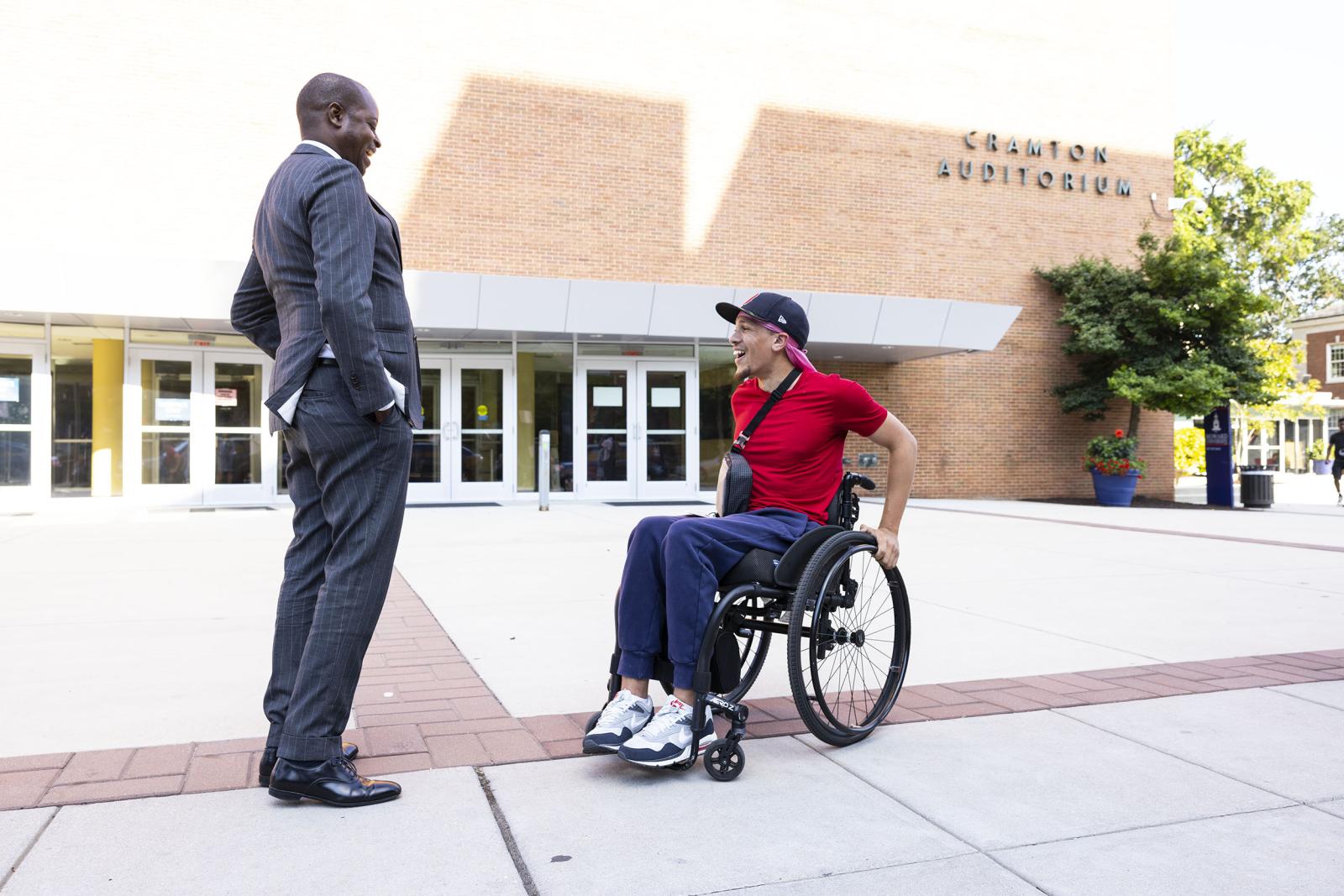
‘He Saved the Hospital’
“At the time Dr. Frederick became president, the hospital was losing [around an average of] $50 million a year,” says Michael Winston, a long-time Howard University employee, who came out of retirement to serve as Dr. Frederick’s provost. “He saved the hospital. It would have gone out of business. That’s an enormous accomplishment.”
In 2014, Dr. Frederick brought on Paladin Healthcare Capital, a company that took over operations of the hospital. Through spending cuts and other measures to improve efficiency, the hospital was able to turn around in its financial posture in a relatively short amount of time.
By 2023, Howard University Hospital has become a profitable health care organization once again. It has entered into a new management partnership with Adventist Healthcare. The United States Congress awarded Howard $100 million for the construction and renovation of a new hospital and medical center, a testament to the institution’s significance and vitality.
“Howard University Hospital is not only critical for providing care to a significantly underserved part of the population,” Winston says, “it is one of the essential elements in having a medical school and in getting students not only properly trained, but placed, and having a clinical experience that is appropriate.”
From Preschool to University
by Anthony K. Wutoh
I was first introduced to President Frederick over 16 years ago when our children were toddlers in the Howard University Child Care Center. I was drafted to serve as the president of the PTA. I talked with parents about the opportunities, challenges, and ways that we could be more engaged in the early educational experiences of our children. We conducted bake sales, attended field trips, made suggestions for improving opportunities, recognized great teachers, and engaged in educational encounters from a grass roots level.
These early experiences allowed me to get to know President Frederick as a father and parent. We developed a working relationship initially framed around what was in the best interests of our children. Even at that young age, Howard University was already impactful in their lives. Those preschool days have underscored my appreciation and respect for Dr. Frederick’s leadership, decision-making and deep love for the University, as well as an understanding that the work that we do is not only for our own purposes, but to continue to create excellent educational opportunities for generations of Bison to come.
As we both progressed in our academic careers to positions of increasing responsibility and challenge, I am most appreciative to have known him first as a caring parent and proud Bison father. I have been honored to serve under Dr. Frederick’s leadership as the dean of the College of Pharmacy and currently as the provost and chief academic officer. Sixteen years later, the student body we now manage has grown from 50 preschoolers to 12,000 undergraduates and graduates, and fundraising has become more complicated than a bake sale. But our mission remains similar: recognize great teachers, improve educational opportunities, and engage in educational encounters.
Anthony K. Wutoh, PhD, RPh, is the provost at Howard University. Photo by Pete Souza
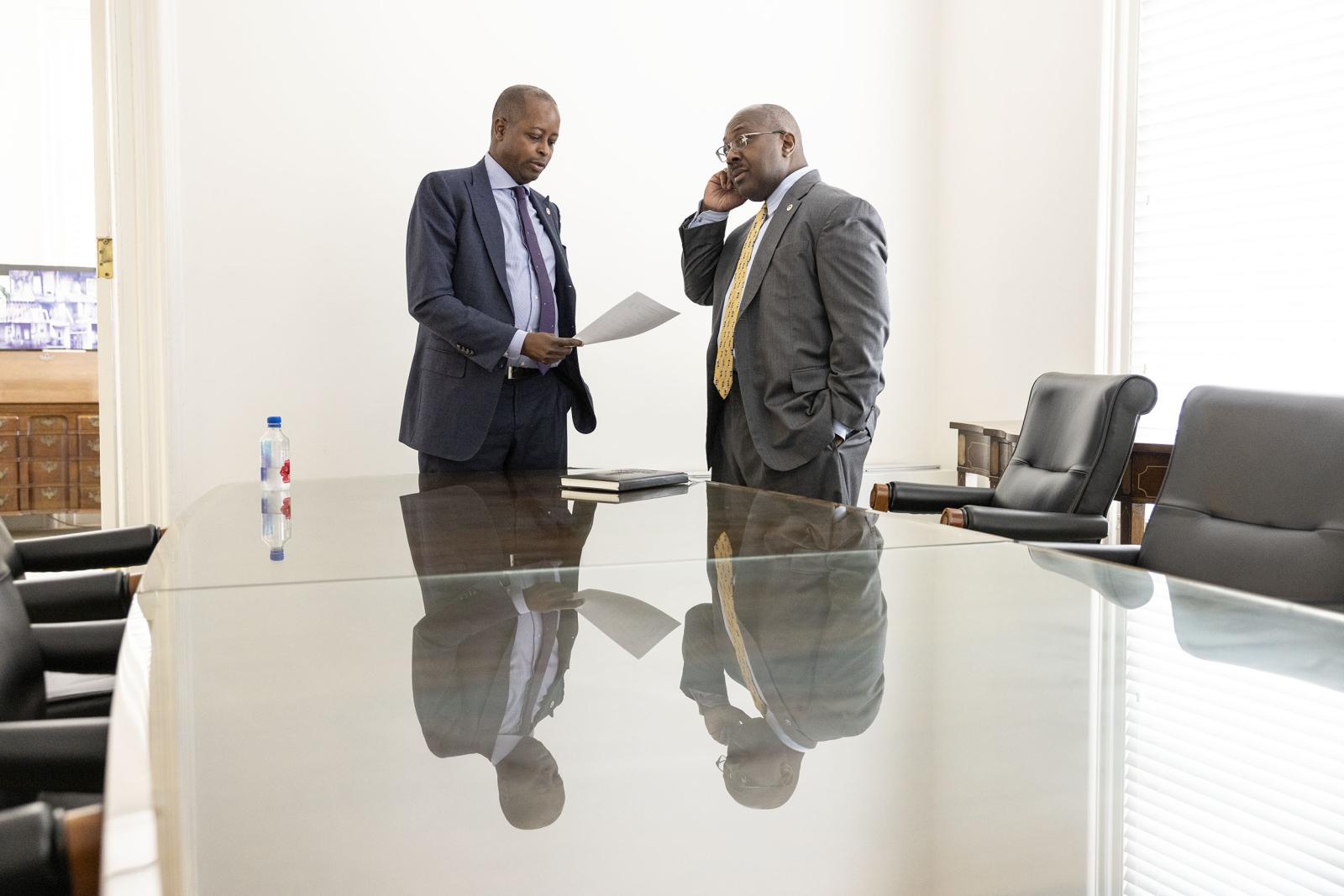
A Dramatic Financial Turnaround
Enhancing the hospital’s solvency was only one of Dr. Frederick’s financial priorities. The end of his presidential tenure has been defined by record-setting financial figures that are dramatic improvements from where the University was at the beginning of his presidency.
In 2022, Howard received two credit rating upgrades over three periods. Growth in philanthropic gifts reached an all-time high of $177 million in fiscal year 2021, compared to $10 million in fiscal year 2013. The endowment has grown to an unprecedented level of $854 million in 2022, and is steadily tracking toward the University’s $1 billion goal; in 2013, the endowment was at $514 million. Net tuition revenue has grown from $160 million in fiscal year 2013 to $195 million in fiscal year 2022. Operating cash flow climbed from $31 million to $185 million.
“I had no idea that he would be as effective a president in terms of fundraising,” says Clive Callender, professor of surgery at the Howard University College of Medicine and founder of the National Minority Organ Tissue Transplant Education Program. “There’s nothing that we teach you in medical school [about] how to raise millions of dollars. And that’s an area that he’s just been astounding and astoundingly successful.”
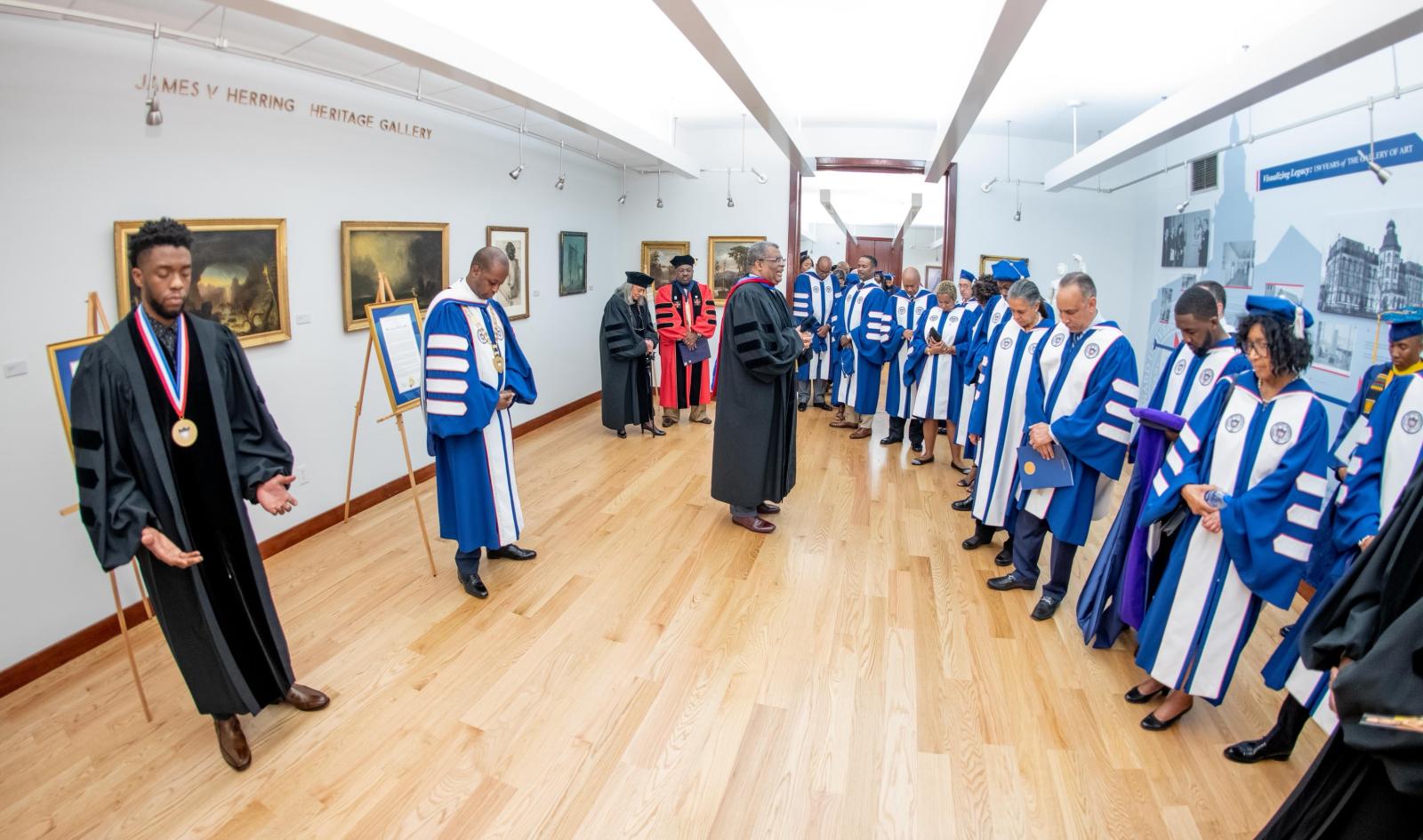
The Humanitarian
By Tashni-Ann Dubroy
“This is not a crisis.” – Wayne A. I. Frederick, M.D.
One of the most unique realities of being on Dr. Frederick’s leadership team is observing him care for our Howard University community as its president, but also as a surgical oncologist. It’s intriguing to hear a faculty or staff member set aside the academic challenges of the day to request time to speak with him about their personal health or of a loved one facing adversity.
When Dr. Frederick utters these calming words in moments of tumult, you instantly know that in our scramble to problem solve or the public discourse about Howard's legacy being at issue, ultimately, a man who saves lives and has given his life to the institution is right.
The brick and mortar of a university symbolize a mission supporting lofty human goals of faith and freedom, but it is people who make them come alive. What is taught, what becomes culture, and what makes a mission feel real come from people who give their lives to its cause. Bad days must be private. Evolution is encouraged, but not beyond the boundary of the traditions. Imagination and ambition must be broad but not aggressive, emotion should demonstrate empathy but be controlled, and fatigue resolved in prescribed breaks but buoyed by intrinsic strength.
Dr. Frederick has danced between the private peril and public prestige of leadership to create an all-time outstanding tenure of service to Howard. His is a life for the cause of the University; a place that he loves with all his heart as something more than a community or a mission, but a guide path for the world.
A different version of every person exists in the minds of people who they meet throughout life. Each person perceives another based on their own personality and the relationship that is built. I have been honored to serve our Howard University community alongside Dr. Frederick, the humanitarian.
Every version of him has been and will always be committed to the idea of our community knowing that it never has, and likely never will face a crisis too big for its mission or ideals.
Tashni-Ann Dubroy, PhD, is the executive vice president and Chief Operating Officer at Howard University. Photo by Pete Souza
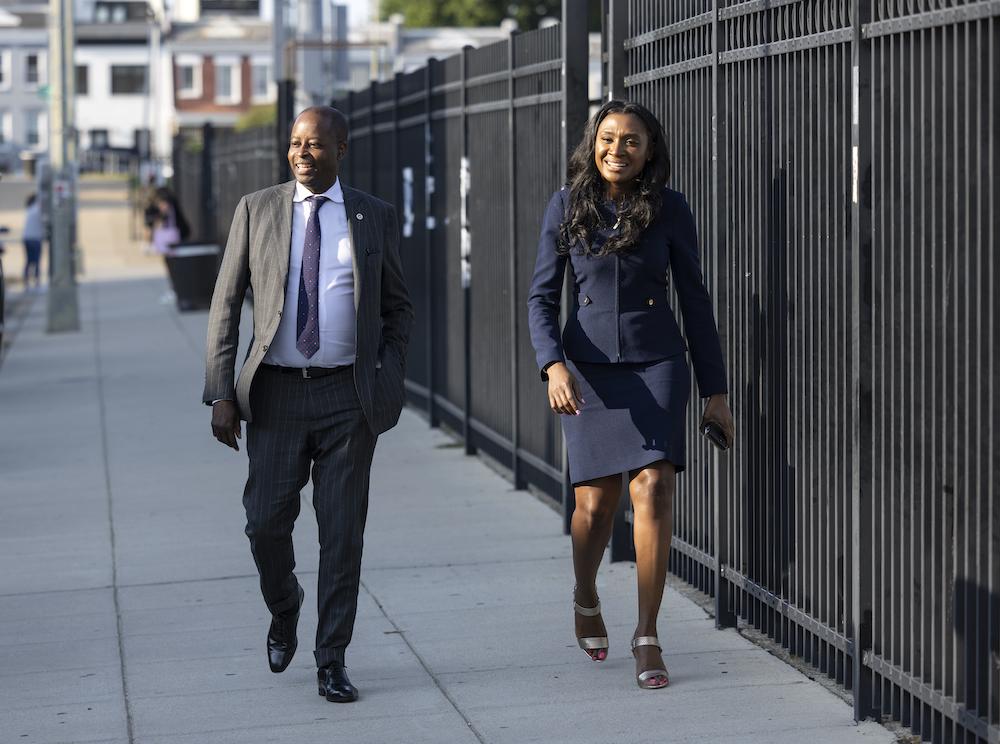
A Place Worthy of Investment
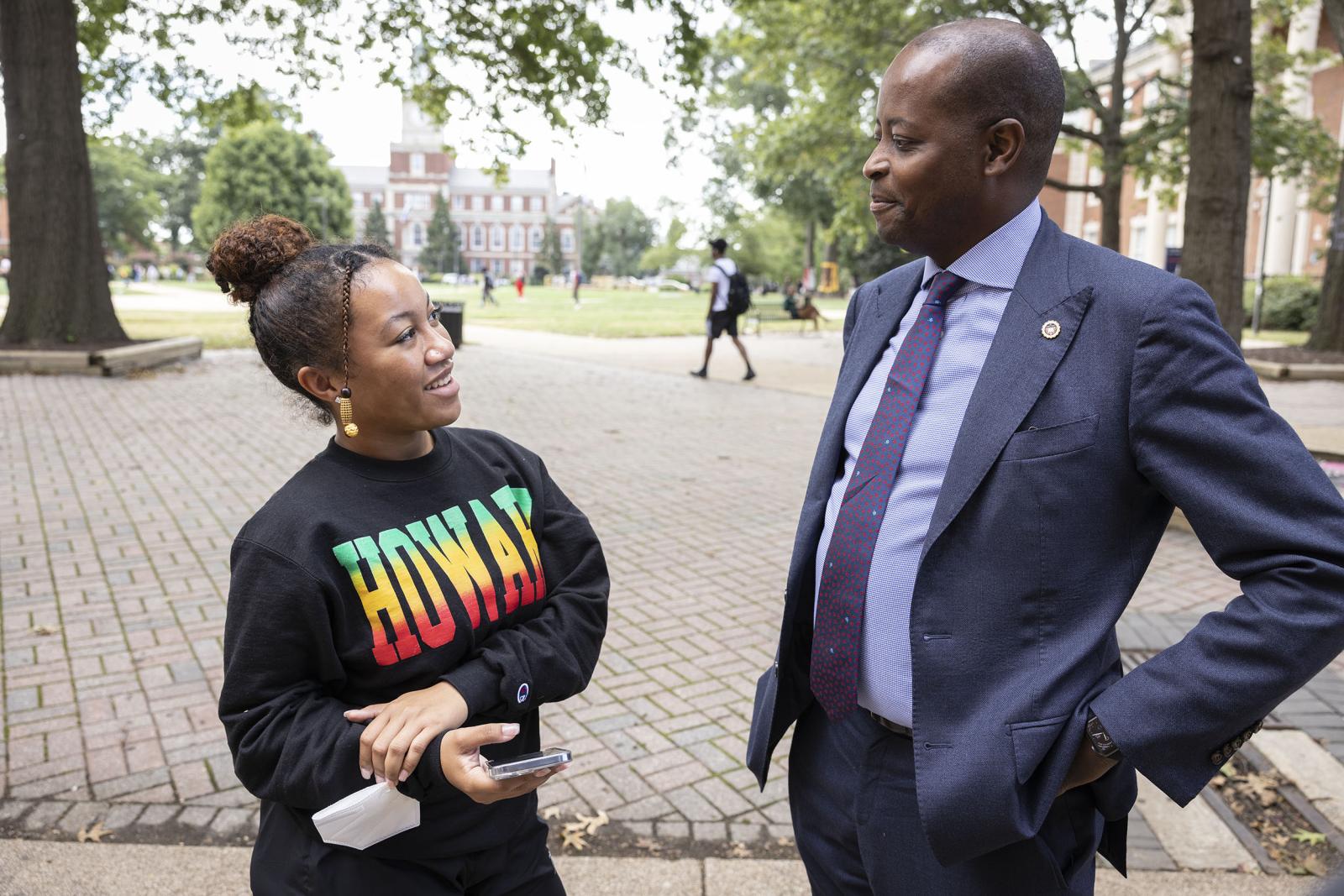
In many ways, Dr. Frederick’s presidency has been defined by the transformational funding he has helped to secure for the University.
Dr. Frederick was willing to do the grunt work, the unglamorous, yet vitally necessary tasks, needed to “right size the finances, raise the strength of internal controls. These are the pieces inside the house that have to be strong for the University to thrive,” Monteiro says. “[He convinced] folks that they should be investing in this place. [He built] confidence among the alumni [and donors] that this is a place you want to invest in. You watch the alumni giving rate skyrocket. The federal government [gave the] highest federal appropriation ever under his presidency.”
From the unrestricted $40 million gift from philanthropist MacKenzie Scott to the $20 million endowment from the J. Willard and Alice S. Marriott Foundation to establish the Sorensen Center for Hospitality Leadership and the $344 million 2022 federal appropriation, the largest in institutional history, this influx of investments and partnerships is creating tremendous opportunities for the University itself and those in our community.
“Dr. Frederick did the necessary work of strengthening the enterprise from within, so that when the eyes of the nation really turned to Howard, Howard was ready for the moment,” Monteiro says.
Throughout his presidency, the eyes of the nation did indeed turn toward Howard – in both good times and bad. During the more than 30-day long student protest in the Fall 2021 semester, where students occupied the Blackburn Center and camped out in front of it to protest conditions in the residence halls on campus, Howard attracted tremendous amounts of media and national attention. The student protest of 2018 prompted a federal investigation that resulted in the University being placed on heightened cash monitoring by the Department of Education.
I will always appreciate Dr. Frederick’s willingness to share the thinking behind some of his major decisions and to allow himself to not be seen, publicly or privately, as a leader that was larger than life.”
— John M. M. Anderson, PhD, Dean, College of Engineering and Architecture
“[Dr. Frederick’s ability to] navigate some of the family fights that have happened here. The federal investigation that [resulted in] the most draconian sanction the Department of Education can apply, [which] usually puts schools out of business. In my view, [that was wrongly applied], [and] we were off it in a year because they came in and looked and saw that there were there were things that needed to be improved, but the house was sufficiently in order that they could take us off of that very burdensome sanction,” Monteiro says. “Dr. Frederick dealt with [these challenges] with grace. [Regarding the protests], he did not take adversarial, critical, or harsh lines with folks, because these are members of the Howard family, whether they’re current students, faculty, staff, alumni donors. [He would always] try to explain what he was doing, why he was doing it, [how] he had done the due diligence to [determine] the best strategy for what ails Howard in whatever context. [He was always] as transparent as you could be. There was very little he wouldn’t share.”
Open communication is what Dr. Frederick believes strongly in, as well as exercising protest with cordial tones. “For a university like Howard's, I still believe that it does require a certain tone and tenor in terms of our approach,” he says. “There is a decency that we should interact with one another with; there's a way we should speak to one another, there's a way we should even make assumptions about each other's intent. That raises the discourse to a civil nature [even if] we still disagree. But I don't think it should ever rise to personal animus or personal attacks.”
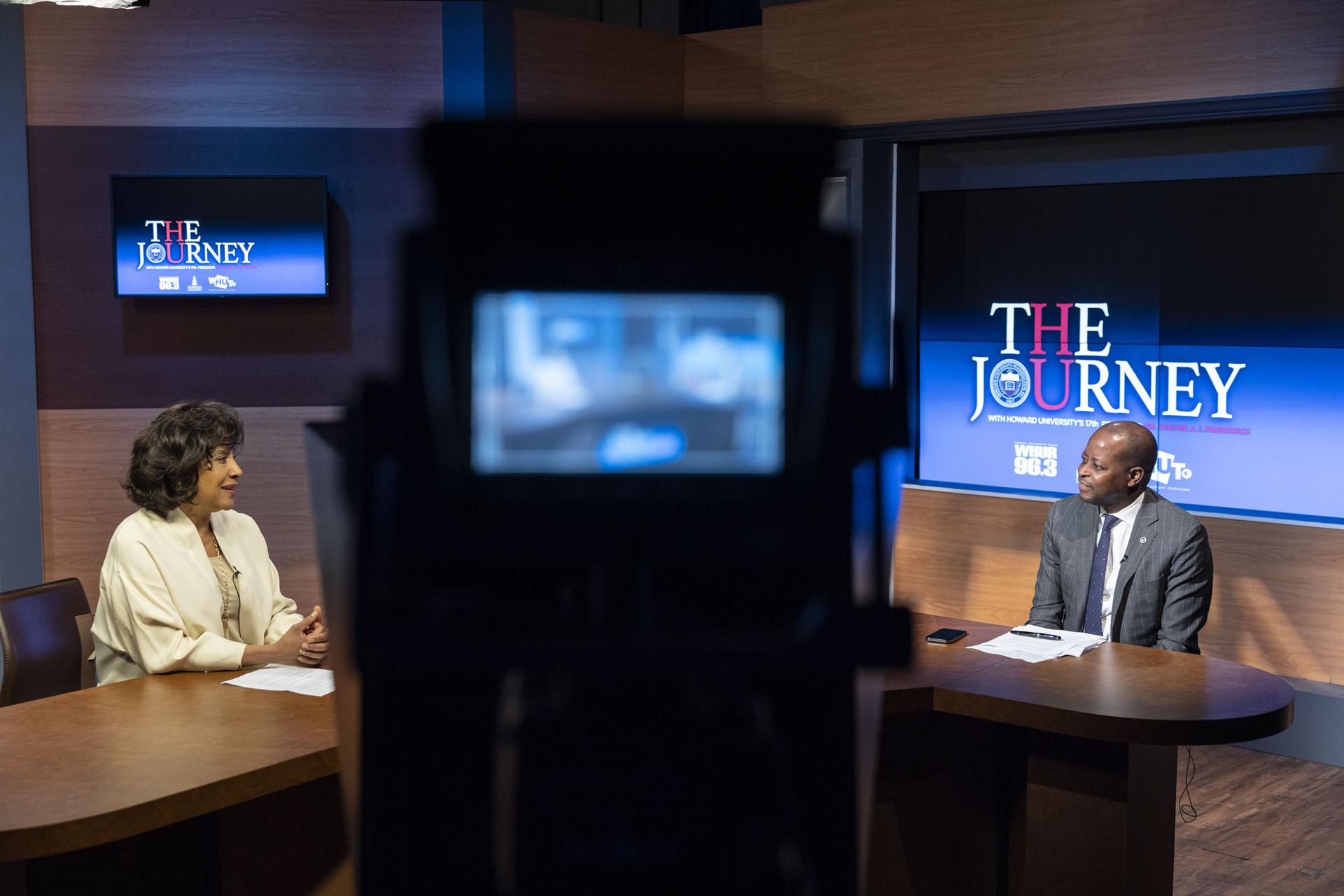
Dean Phylicia Rashad and Dr. Frederick chat over a taping of The Journey at WHUT. Photo by Pete Souza.
He walks with purpose. Undeterred by negativity and naysayers; a challenge becomes an invitation to finding solutions; obstacles become opportunities.” —Phylicia Rashad, Dean, Chadwick A. Boseman College of Fine Arts
An Innovative Approach to Transforming Howard’s Campus
In March 2022, Howard announced an ambitious $785 million capital plan, which included construction of a new STEM complex, a new Health Sciences Complex, and a Center for Arts and Communications, all slated for a 2026 completion date. These will represent the first new facilities erected on campus since 1984. Also, the Myrtilla Miner Building, home of the School of Education, will undergo extensive renovation.
Prior to that announcement, the University had already renovated 80% of residence halls with improved security and building system upgrades. The University Central Campus Master Plan also includes roughly 1,500 additional housing units.
While Dr. Frederick recognized the need to make these enhancements when he first took office, he also understand that not all of these projects could take place right away considering the financial challenges the University was experiencing in 2013.
“Major construction initiatives on college and university campuses requires years of planning. We have to strategically prioritize which projects to undertake based on numerous factors, both internal and external. The fact that we are now positioned to move forward with three large-scale new construction efforts in addition to major renovations speaks volumes to the administration’s long-term vision and execution,” said Rashad Young, senior vice president and chief strategy officer.
In addition to overhauling many of the on-campus facilities, Dr. Frederick’s administration has taken a novel approach when it comes to the University’s real estate holdings. The University has leased land and buildings to developers to use for non-Howard purposes, including high-end condos. However, the arrangements ensure that Howard retains the title to the land in perpetuity.
“We are forever owning the dirt. That’s where the wealth and value is. We’re monetizing the real estate,” Monteiro says, adding the arrangement allows the facilities to be upgraded by third-party users when Howard doesn’t have the cash on hand finance the renovations itself. And in addition, the proceeds from leasing the building has proven to be a reliable source of revenue that can be used for other ventures.
What Makes a Great President?
By Jordyn Allen
Howard University is an institution that empowers students to constantly challenge the status quo to create tangible change. During my matriculation at Howard I always found myself near conversations where students, alumni, and faculty would challenge the work of our University, alumni, and Howard University Student Association (HUSA) presidents. So, when considering candidacy to become the 62nd HUSA President, I questioned, “What makes a great President?”
Over time, I have realized the answer is not clean cut. Every presidency embodies different challenges and triumphs that make one’s tenure unique, but they all work together to push the institution forward.
In collaborating with Dr. Frederick this year, I began to develop a deeper understanding of what truly makes a great president. A great president is one who remains confident in the foundation and decisions they are making to build a better future without being withered by short view ideas and solutions proposed by others in the present.
In the end, my degree will be signed by Dr. Frederick and my time on campus will be defined by what happened during his leadership. During my tenure working with Dr. Frederick, he has done a marvelous job opening doors for collaboration with HUSA so students feel as though they can have a personable relationship with their university president and serving as a phenomenal role model to what a presidency should look like. And those are key principles to moving any institution forward.
Jordyn Allen is a senior marketing major and the current HUSA president. Photo by Pete Souza
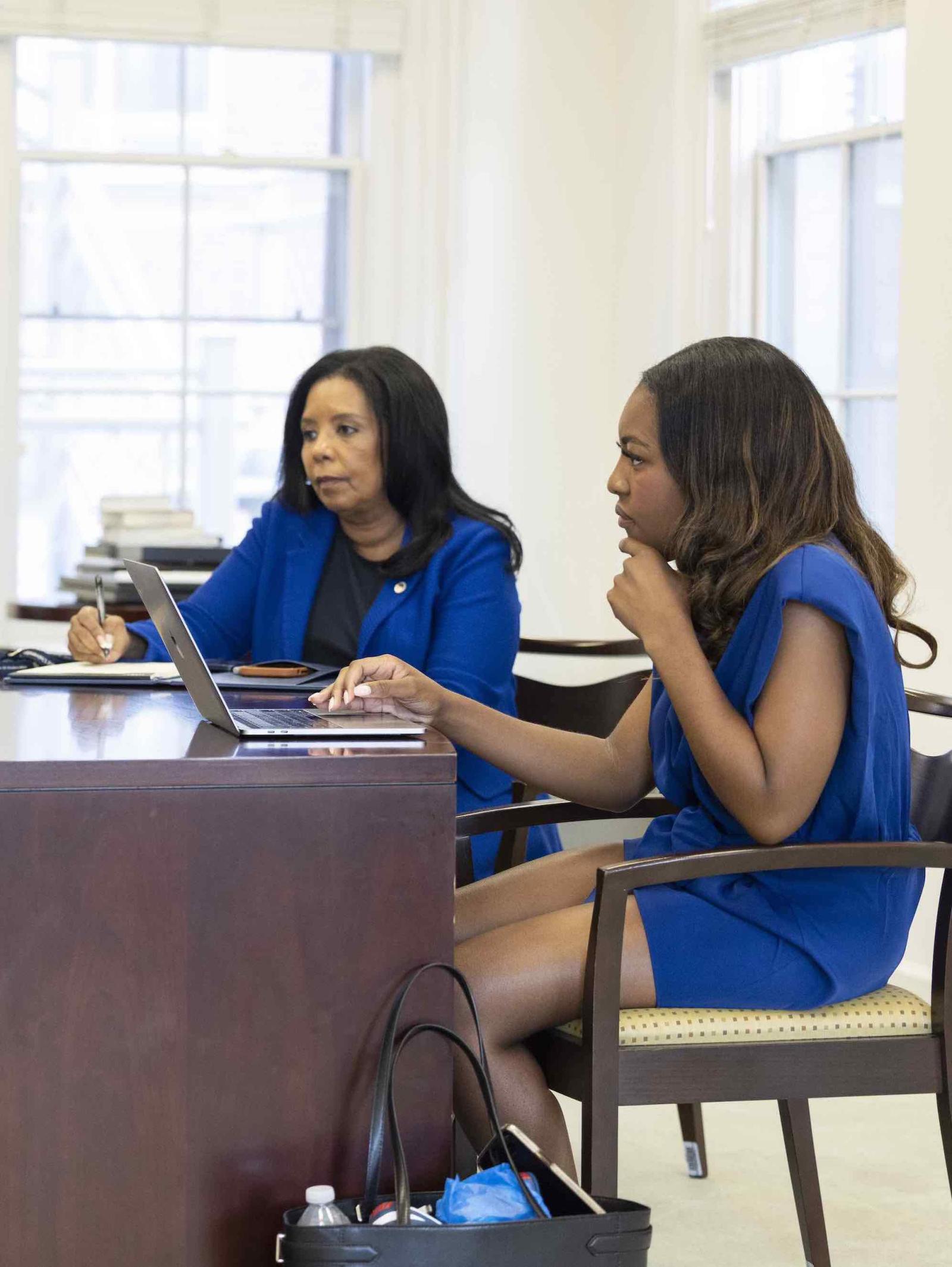
Creating Opportunity, Supporting Students

The coronavirus pandemic revealed and exacerbated the tremendous need that existed within the Howard University student body as well as some of the fractures that exist within our society.
During the most challenging days of the pandemic, Howard was committed to providing for students in need. The University kept open the food pantry, allowed housing insecure students to live in the residence halls, and more. Howard distributed $176 million in institutional and donor-funded aid during the 2021-2022 academic year, helping students by eliminating debt, waiving fees, providing direct cash payments, free emergency housing, providing emergency meal assistance, and more.
Prior to the COVID-19 pandemic, Dr. Frederick made supporting students a priority of his administration.
“As an undergraduate student [working in the Office of Financial Aid], he saw the lines and knew what would what it was like not to have enough money to cover your funds,” says LaRue Barkwell, a long-time Howard employee, who served as Dr. Frederick’s executive assistant and chief of staff, and also managed him as a student financial aid employee.
The GRACE Grant was established by Dr. Frederick to help remove any financial barriers for students and encourage on-time graduation for students who successfully completed their freshman year. This need-based program, created in 2014, provides a 100 percent match for students who receive the maximum Federal Pell Grant and provides additional funding for those with an expected family contribution (EFC) of $0.
The impact of the GRACE Grant is clear. Since its inception, GRACE recipients saw an average 17 percent increase in retention and an average four-year graduation rate of 78 percent, a 32 percent increase compared to students in the same financial category who did not receive GRACE funds.
In addition to helping students financially, Dr. Frederick has also been committed to creating opportunities for students to develop their professional skills and enhance their workforce readiness – and to change the world in the image and vision of Howard University.
Non-Stop
By D. Paul Monteiro, JD
I’m no stranger to hard work. I’ve worked in the White House, I’ve worked at the Justice Department - high intensity jobs where there’s no 9-5. And even with that background, the pace that Dr. Frederick kept up was something else. Weekends, evenings, early mornings, holidays, a text about this, let’s meet about that, we need to address this rumor on social media, we need to meet with so and so because they’re upset about this or this person is considering giving - let’s set up a meeting so we can show why Howard’s a good investment. And he gave his whole self to this place. He continued doing surgeries and at no cost to the University. At the same time, he’s teaching students in his PhD class. And with his sickle cell and underlying conditions, you’re just always concerned that, you know, he’s pushing himself a bit too hard.
But he loves this place. I got to see him in the behind-the-scenes moments, these off hours where even then, he was always thinking about how to address something on campus. No one could doubt his love for Howard. Howard is his family.
Paul Monteiro, JD ’07, was chief of staff for Dr. Frederick between 2017-2022.

‘He Sees the World, Not As It Is, But As It Should Be’
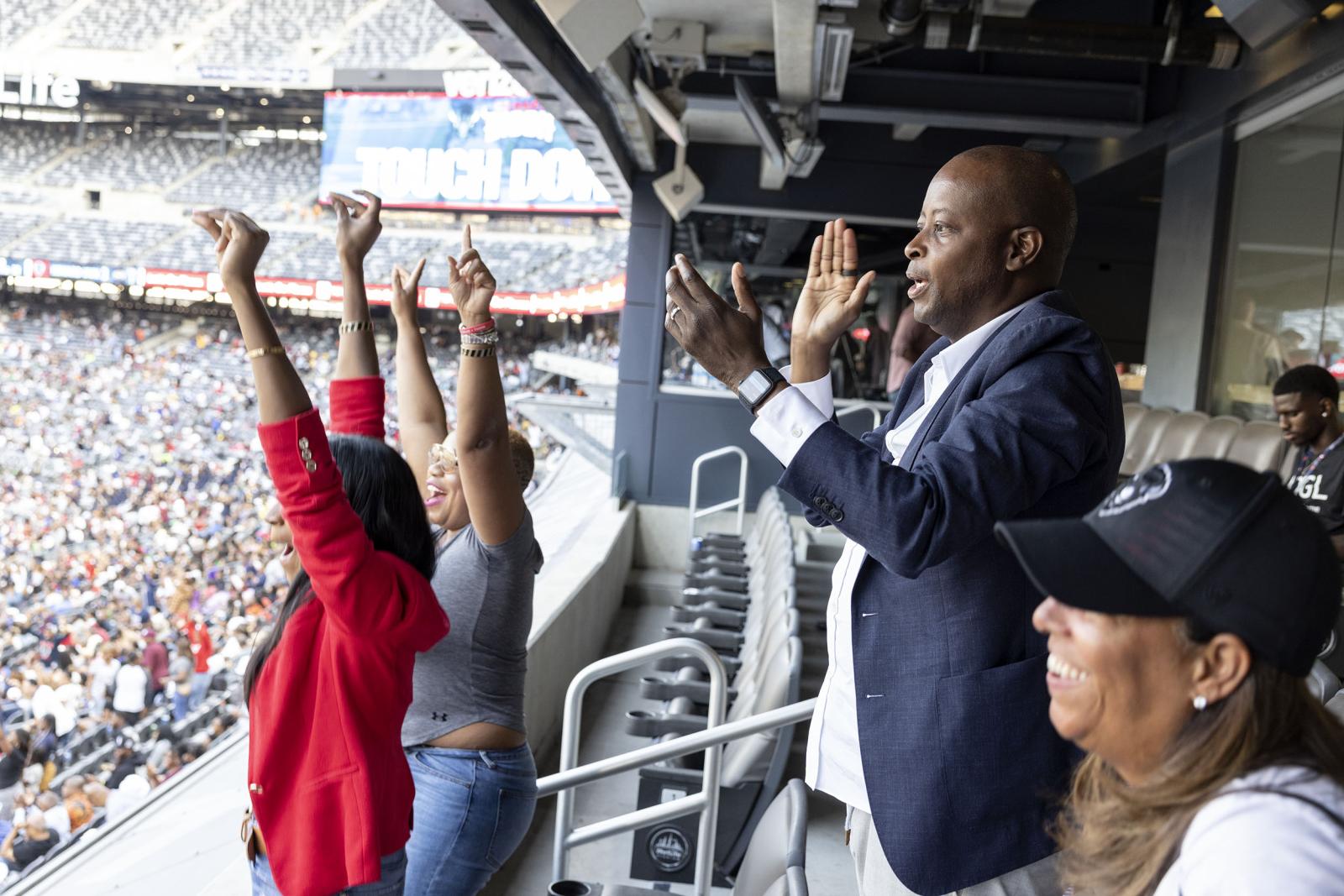
According to Hadley, Dr. Frederick’s capabilities as president stems from his vision.
“He sees the world, not as it is, but as it should be,” Hadley says. And then he works to bring his vision to fruition.
Dr. Frederick saw the talent and potential of Howard students not only to be successful in their careers, but to transform key industries. Throughout his presidency, he has worked to develop programs to develop Howard students and provide them with opportunities to excel in their careers, and increase diversity in key areas in the process.
One of Dr. Frederick’s first presidential trips was to Silicon Valley. He met with leaders at Google and ultimately partnered with them to create Howard West, now known as Tech Exchange. The idea was to get Google to invest in the education and training of Howard students. Through this exchange program, Howard students are taught by Google leaders and they intern at the company. The end result is better training and experiential opportunities for Howard students and an enhanced likelihood of finding employment at the company after the program had ended.
Dr. Frederick’s administration created several similar programs for different industries, including Howard Entertainment with Amazon Studios.
The Karsh STEM Scholars Program has also been an essential proof of concept program for Howard and Dr. Frederick. The program selects high potential science, technology, engineering, and mathematics students coming out of high school and provides them with all the resources they need to be successful. It continues to attract high-achieving minority students interested in science, technology, engineering and math. And it has already established a record of cultivating exceptional graduates who have moved on to some of the most preeminent institutions to pursue a STEM-based PhD or a combined MD-PhD.
In the case of these Howard programs, Dr. Frederick was never content to just serve Howard students. He wanted to create opportunities for all HBCU students.
“Once Howard kicks in the door, the goal is to leave it off the hinges,” Hadley says.
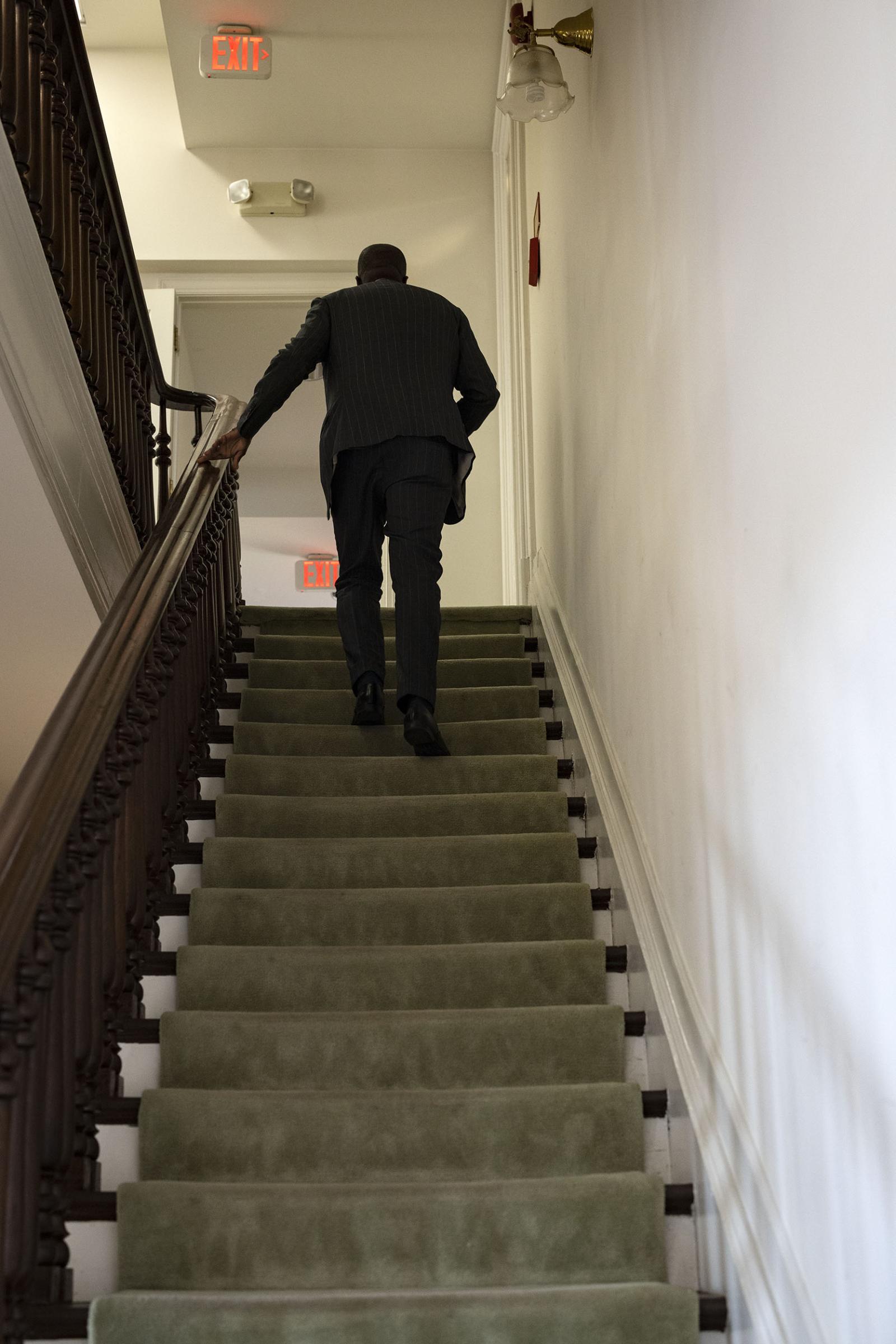
Leading the Flotilla of HBCUs
When Howard West changed its name to Tech Exchange, it did so when it invited other HBCU students to participate in the program.
Howard has also created several Summer enrichment programs, where HBCU students have been invited to Howard’s campus to participate in training and exam preparation free of charge. Through the Pre-Health Scholars Summer Enrichment Program, Pre-Law Scholars Summer Enrichment Program, and the Pre-PhD Scholars Summer Enrichment Program, students learn from current Howard graduate students as well as faculty members to prepare for the rigorous admissions processes as well as understand the challenges of graduate school.
“To whom much is given, much as expected,” Hadley says. “We’ve seen [Dr. Frederick take on that responsibility] throughout his presidency. Our goal was to take all of what we have [at Howard], get some more, and [then] ensure that the rest of the HBCU community has [the same] opportunity [to succed].”
An Unusual President for an Unprecedented Time
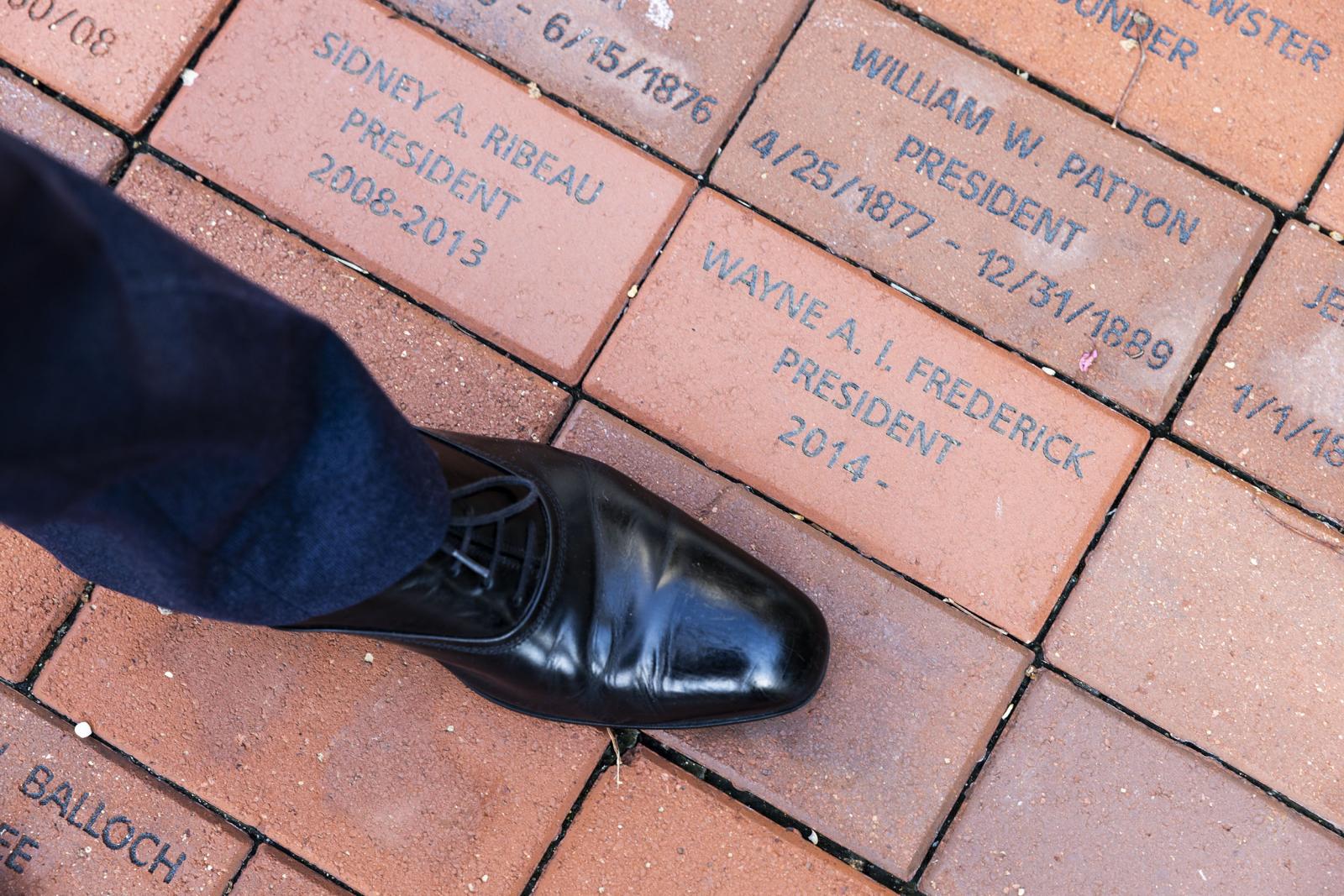
As a cancer surgeon, Dr. Frederick’s background made him an unusual choice to become Howard’s president. He is one of only a few dozen presidents of American institutions of higher education – and likely the only one who remained a practicing surgeon throughout his presidential tenure.
But according to many, it was precisely his capabilities as a surgeon that made him an ideal candidate to tackle the immense challenges Howard was facing 10 years ago.
“What sets him apart is his willingness to handle the situations [of his presidency] the same as he does in surgery. And what sets us apart as surgeons is the ability to, when the bleeding is there, when the crisis is there, to be cool, calm, and collected, and to do what is the right thing,” says Clive Callender, professor of surgery at the Howard University College of Medicine and founder of the National Minority Organ Tissue Transplant Education Program. And I think that’s what makes him a great surgeon [and] also makes him a great president.”
According to Michael Winston, a long-time Howard University administrator who also served as provost during Dr. Frederick’s administration, it was Dr. Frederick’s “unusual combination of training” that enabled his presidency to thrive. In addition to the mentality he cultivated as a surgeon, Winston also points to the master’s in business administration that Dr. Frederick earned in 2011.
“His MBA is not decorative,” he says. Dr. Frederick leveraged his business acumen to improve the University’s financial posture.
In addition to his academic and professional resume, many say that what made Dr. Frederick the right person for the job was not just the degrees he earned, but where he earned them from – Howard University.
“He had a self-sacrificial attitude toward Howard,” Winston says. “When he says that he loves this place, he does, and he loves it for the best of reasons. He was one of many people who had a transformational experience at Howard University.”
However, as an alumnus, Dr. Frederick did not feel beholden to keep Howard the same or to return it to precisely what it had been before. On the contrary, “he respects the tradition by innovating,” Winston says.
Dr. Frederick was willing to buck Howard tradition if he felt it was in the best interest of the University’s long-term future.
United Together
By Camara Jules P. Harrell, PhD
Thankfully, there are times when tensions recede between the academic and central administrative components of universities. When external accrediting bodies send hordes of site visitors to campuses, faculty and central administrators are forced to turn down the volume on their squabbling. The watchwords become, “Let’s pull together.”
At the beginning of Dr. Wayne A. I. Frederick’s tenure as president, a site visit from the American Psychological Association at the Howard University Clinical Psychology program took place. First, the visitors met with the department, then they journeyed up the hill to hear from the central administration, including the president and Drs. Michael Winston and Anthony Wutoh. They seemed quite satisfied upon returning from the administration building, but they wore bemused expressions. One visitor pulled me aside and remarked that Dr. Frederick and his team showed an unusually broad and deep understanding of the clinical program. She recounted that the Howard administrators recited details about program without using notes.
As president, Dr. Frederick headed a group of administrators cognizant of the importance of clinical training in psychology at Howard University. In the best traditions of the University, he and his team studied the clinical unit and its history. Then he unified faculty and administrative efforts to show visitors the remarkable features of this Howard University program that is dedicated to meeting today’s significant mental health needs.
Camara Jules P. Harrell, PhD is a professor of psychology at Howard.

A Steward of Howard University
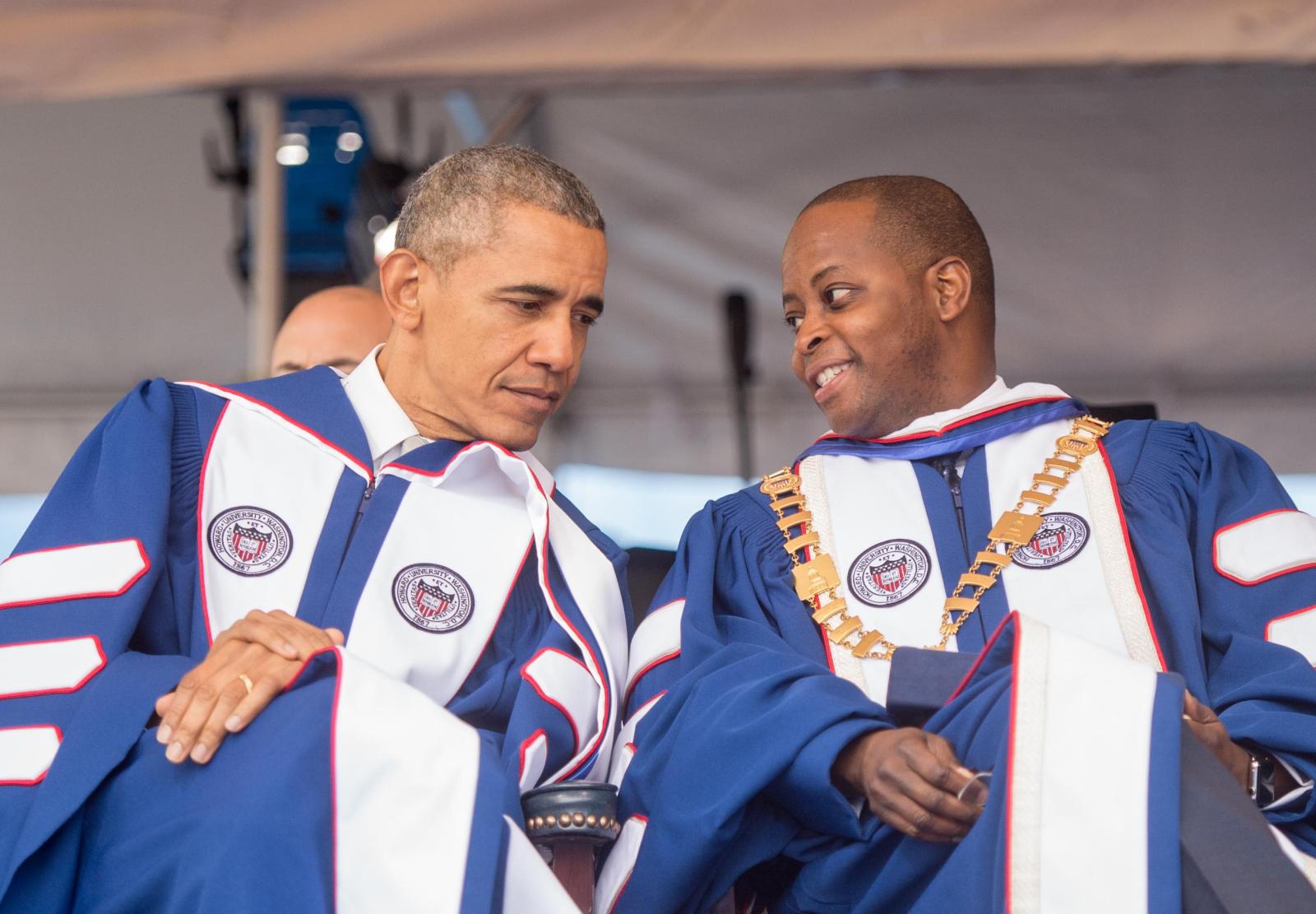
Winston tells a story about Howard’s 13th president James Cheek, who served from 1969-1989. Two Howard students were walking The Yard, a few paces behind President Cheek and Winston. The students were discussing some possible upgrade or improvement at Howard – he doesn’t recall the specifics – when one of them said, “That’s too good for Howard.”
“And Dr. Cheeks stopped in his tracks, spun around, and said, ‘Nothing is too good for Howard,’” Winston says. “Dr. Frederick lives that. He wants the best for Howard. He is devoted to achieving real excellence.”
Dr. Frederick rebuffs any conversation about his legacy. The goal for any college president, he attests, is to be a good steward of the institution and its resources that have been entrusted to the president’s care throughout their tenure. For Dr. Frederick, he emphasizes that he wanted to address the problems the University had at the start of his administration and ensure that the institution was in a stronger position when he leaves the Office of the President than when he first occupied it.
When examining what the University achieved during his presidency, the list appears to be a direct counter example to the challenges he cited when he became interim president and what the trustee cited as the University’s existential challenges in the letter leaked to The Post.
If his one job was to ensure Howard was in a better place at the end of his presidency than at the beginning, then mission accomplished – and then some.
Yes, You Can
By Keneshia Grant, PhD
What stands out most to me about Dr. Frederick’s leadership of Howard University is his “can do” and “do it now” attitude.
Around September of 2016, I received an invitation from Dr. Frederick’s office to attend a conference about the future of graduate education. I wasn’t sure why I was invited to attend the meeting, but as an assistant professor, I thought it best to oblige the request since came from the Office of the President. In a session about increasing the pipeline of minorities who go on to earn PhDs, I came up with the idea that Howard University should extend its work with the pre-Health and Pre-law programs for undergraduates. I emailed Dr. Frederick to thank him for the opportunity to attend the meeting and pitched the idea of creating a pre-PhD program at Howard. He responded, “Ok. Write a budget proposal, then do it.”
I wrote the budget proposal and presented my plan around November of 2016. According to my plan, we would accept our first pre-PhD cohort in the summer of 2018. After I presented, Dr. Frederick chuckled and asked why I didn’t think I could do it now. I thought, but did not say, “You can’t be serious.” Instead, I listed all the things that would need to happen to start the program and told him that I did not believe we could be ready for the coming summer. He looked me square in the eye and told me that not only could it happen but he was looking forward to hosting the first cohort in Summer 2017.
It took a lot of work, but we hosted our first students in the Summer of 2017. At the opening ceremonies, after all the formalities were finished, he said, “See. You got it done.”
Through the Howard Forward group that he created, I connected with other young professionals and learned that they had also been given a similar charge: Figure out a way to make the place better, then go do it!
Keneshia Grant, PhD, is an associate professor of political science at Howard.
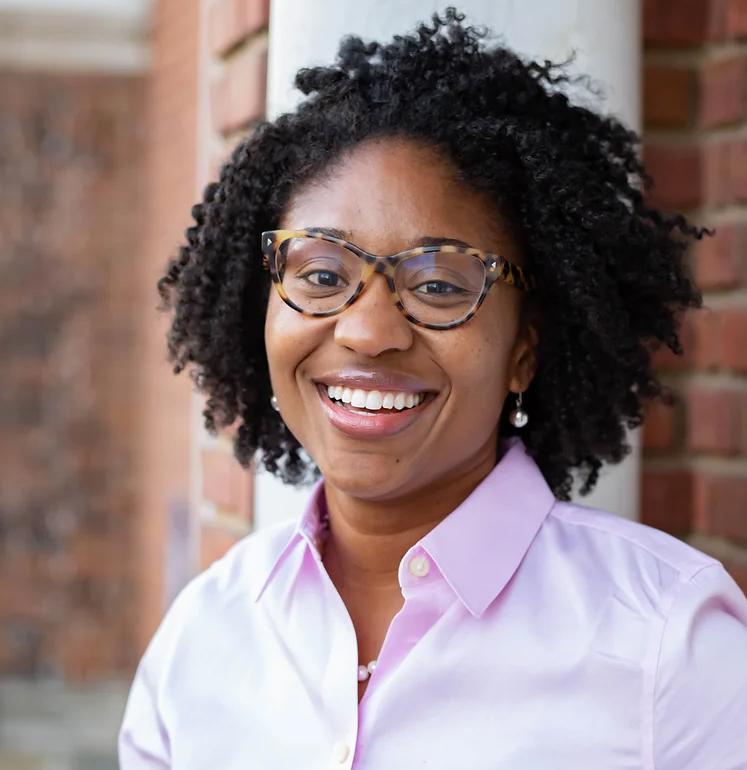
More about Howard's Office of the President
-
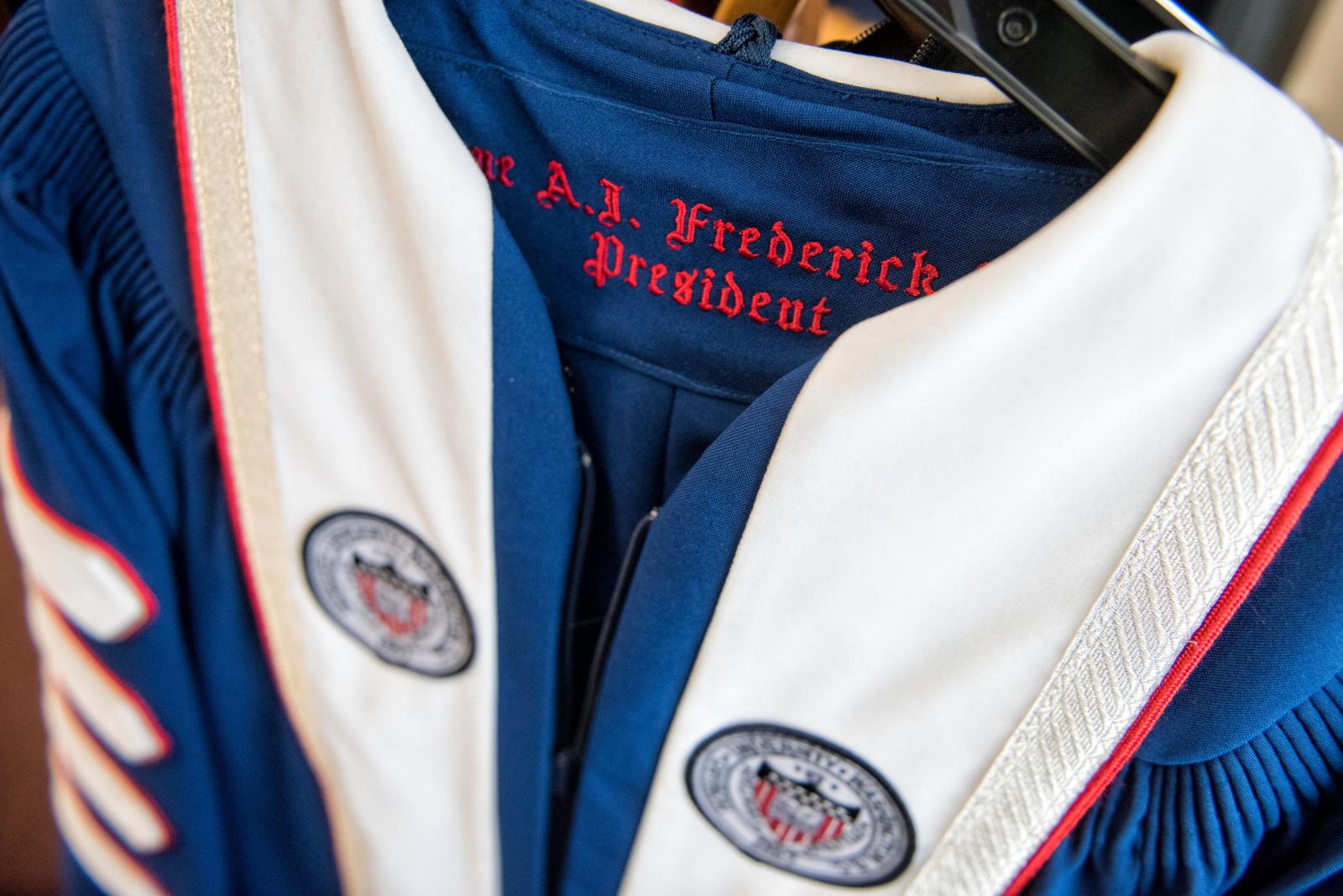
A History of the Presidents of Howard University
Who were Howard University’s 17 presidents? Here’s a summary of their history.
-

The Presidential Symbols
The president's office comes with official ceremonial pieces: the mace, the medallion, and the robes.
-
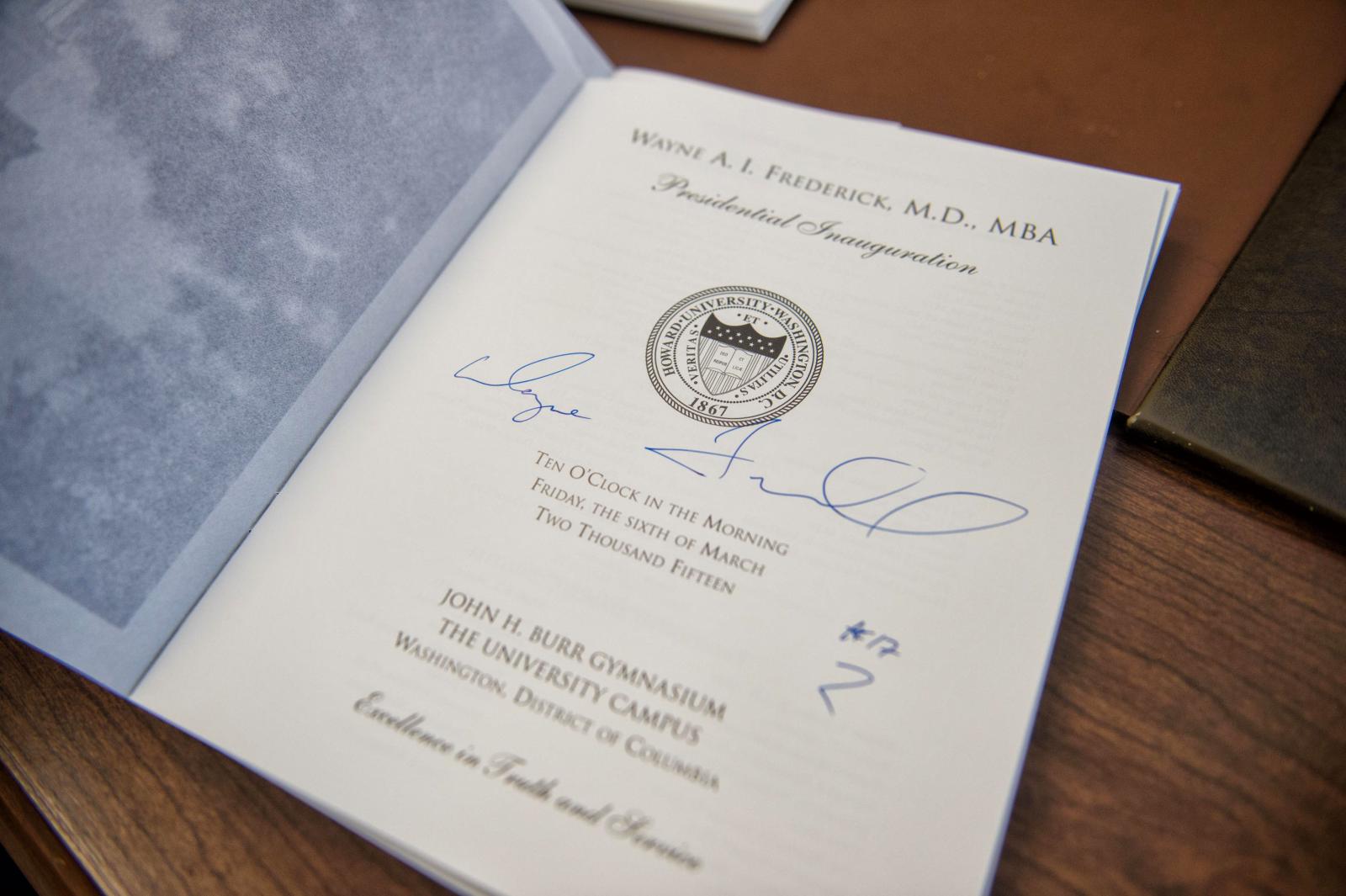
The Job of the President
The president of the University is selected by the Board of Trustees, as stated by the Howard University Charter. We know the president of Howard leads and represents the University, but what does this person do?
-
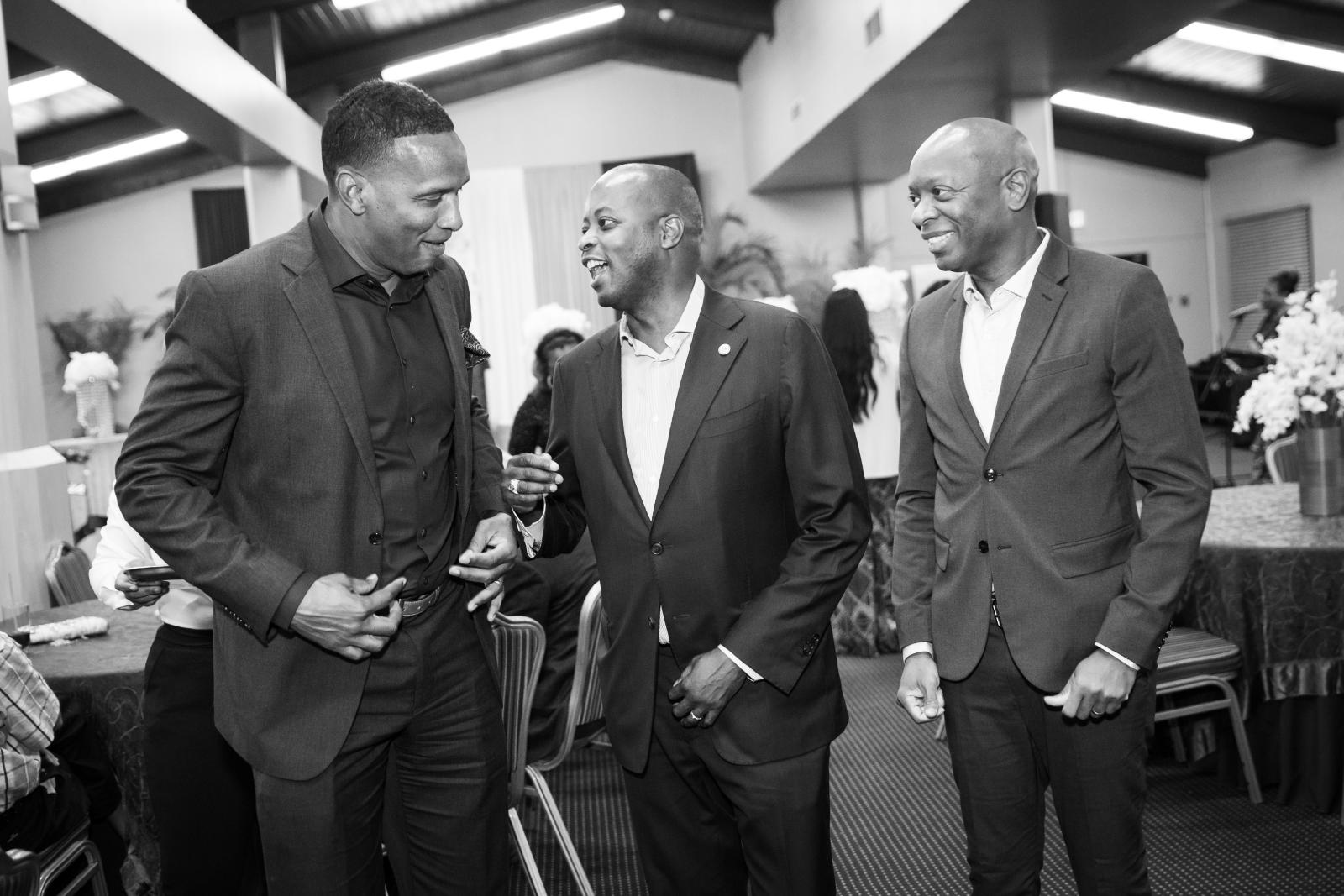
A Timeline of Dr. Wayne A. I. Frederick
A look at Dr. Frederick's milestones and accomplishments through his life.
-
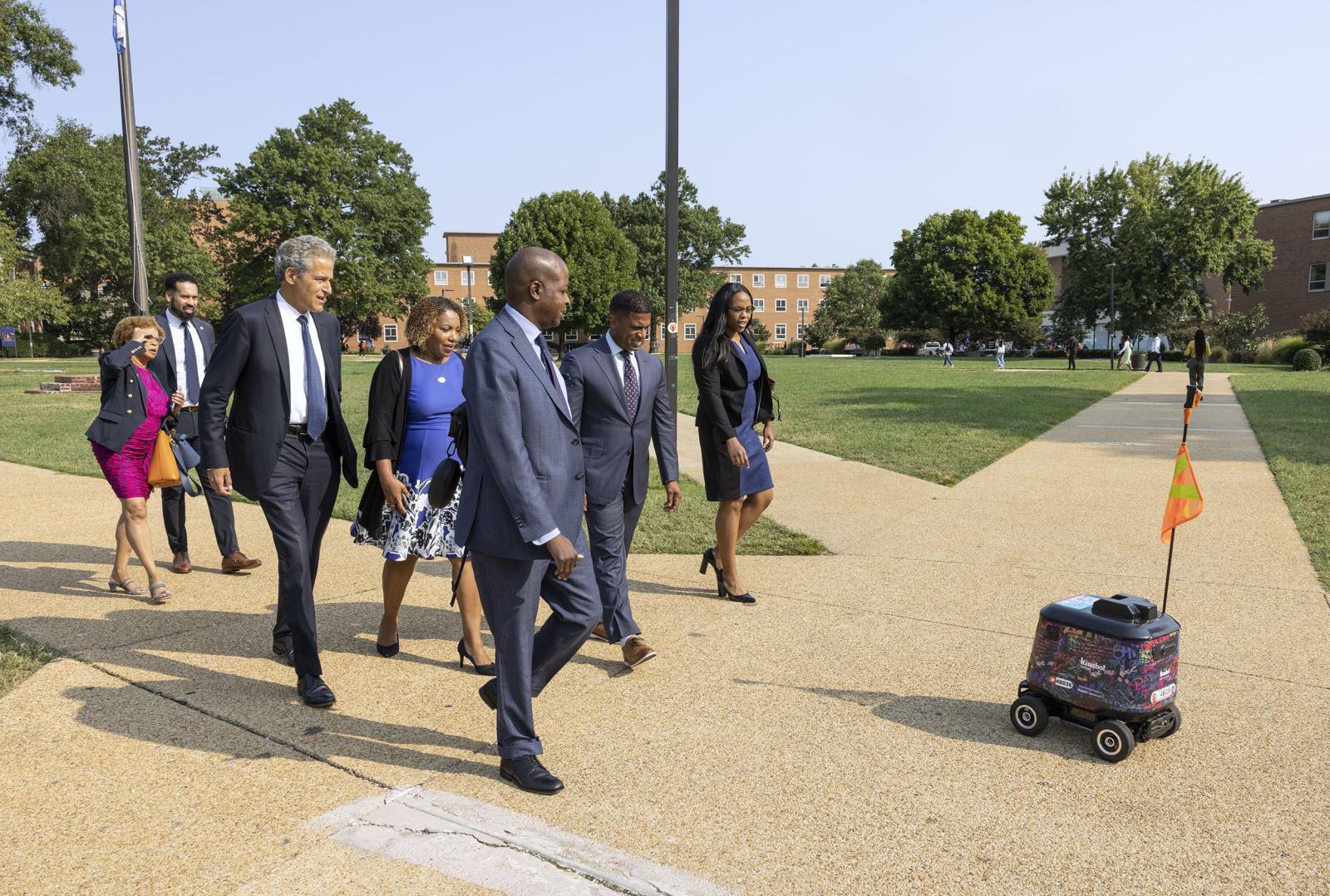
Dr. Frederick's Presidency by the Numbers
A look at the changes on Howard's campus during Dr. Frederick's days in office.
Article ID: 1186



